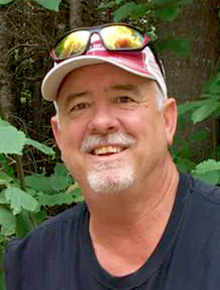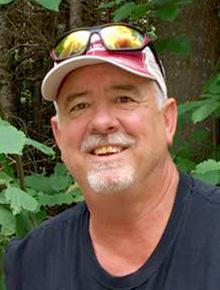
Why is it that everything ends up happening on the same day or days? I have a possible wedding, a retirement party for a great friend, and a decoy show all happening on the same weekend. I want to be at all three events, but we all know you can’t be two places or even three places at the same time. In the end, it is the first commitment I made that is going to win this tug of war.
Twenty-four years ago, a very small group of decoy carvers started the National Fish Decoy Association. I attended for my first time last year, and it is being held April 14-16 in Perham, Minnesota, for 2023.
The National Fish Decoy Association is not necessarily a title that would make thousands of people flock to Perham on this weekend, but if folks knew what was to be seen and experienced there, it would change a lot of minds.
Most of the activity centers around hand-carved decoys used to lure northern pike into your spear hole so you can use the ago-old method of hand-throwing a spear, with the intention of hitting the fish right behind the head.
I started spearing pike and whitefish about 10 years ago because of a friend, Kirk Schnitker, who took me the first time. He was and still is an amazing decoy carver although he does not do it as often as he did in years past.
I use the decoys that he has given me over the years with good success. Not every decoy made works as intended. Kirk’s decoys all swim great.
What does a great working decoy swim like? They hang from a stick, called a jigging stick from a string. An upward pull on the jigging stick brings the decoy up in the water column and then it gently swims in a big circle until it eventually comes to rest again.
These decoys are carved normally from wood, but others cast them from epoxy reigns. They are painted by hand into about 300,000 different patterns.
Some are painted to look like an actual fish a northern pike would want to eat for a meal, and others are painted to be bright and flashy. All are designed to bring a pike in for a closer look.
It is when the fish comes in to check out this foreign object in their underwater world that the spear fisherman or woman gets a chance to throw the spear.
The decoys are weighted to float level in the water and swim naturally. Less experienced carvers make decoys that look great but don’t actually swim in a manner that looks natural. If the decoy is “off,” a pike will know something odd is in the works and will not come into the hole for a closer look.
Spear holes are cut in the ice and are about 4 feet long and 3 feet wide. When in a dark house, a structure with all the outside light blocked out, you can see every underwater creature that swims by. This can be pike, panfish, frogs, turtles, crayfish and many others.
This assumes the water is clear enough to see. Not many lakes in southwest Minnesota are clear enough to accomplish this, so most of the spearing done in our state is done on clearer water lakes further north.
The decoy show highlights the craftsmanship of the hundreds of carvers that come from all over the United States to compete at this show. There are 26 different classes you can compete in, and all have different judging criteria. I have served as a decoy judge in 13 of those classes and will be doing so again this year.
Decoy carvers and their submissions represent some of the greatest craftsmanship I have ever seen. The cool part of this age-old tradition is how the old-timer experts help out the newer carvers in order for them to produce better and better entries.
This show also offers you the opportunity to see and experience the spearing traditions dating back many generations. I am sure spearing fish dates back to the time when man was still trying to kill wooly mammoths.
The website for this show is www.nfdadecoys.org There are a few videos you can watch to get a feel for this event.
I don’t care if you give a hoot about fish decoys, if you appreciate seeing the results of great craftsmen and women in an area of art you can see no place else, this show would be a day or two well spent. So when the tax deadline comes around this year, you can find an entertaining way to take your mind off of that by attending the National Fish Decoy Association show in Perham. If you take me up on this outdoor advice, I might just see you there.
Scott Rall, Worthington, is a habitat conservationist, avid hunting and fishing enthusiast and is president of Nobles County Pheasants Forever. He can be reached at scottarall@gmail.com. or on Twitter @habitat champion.



